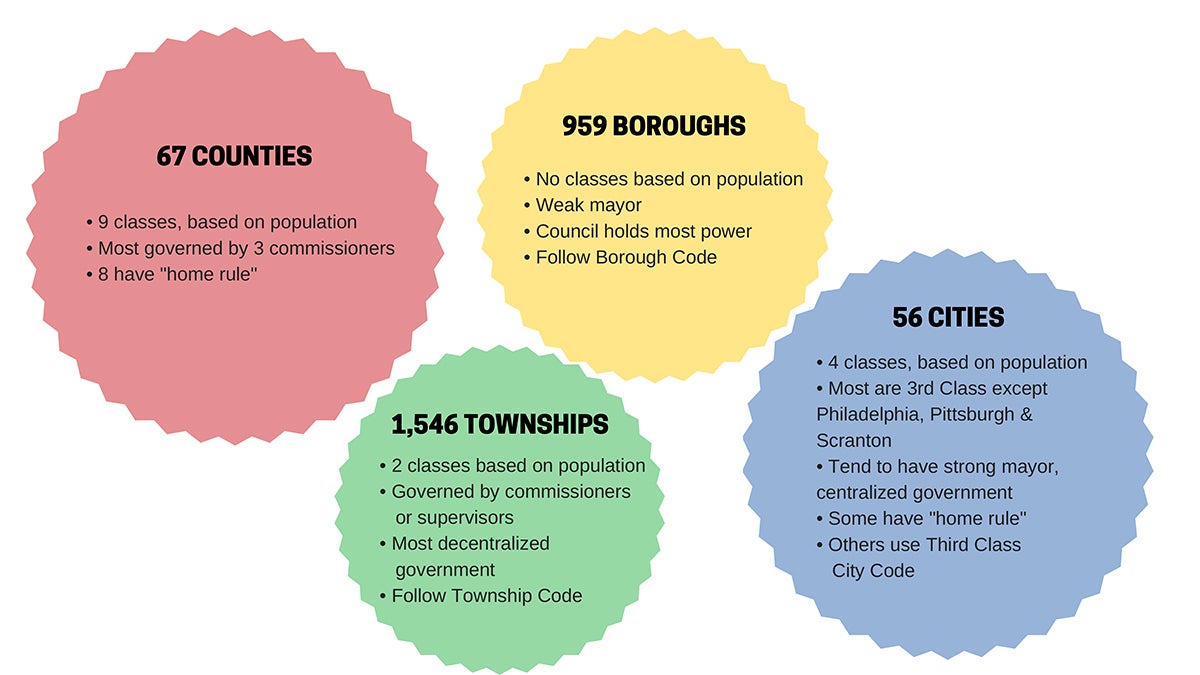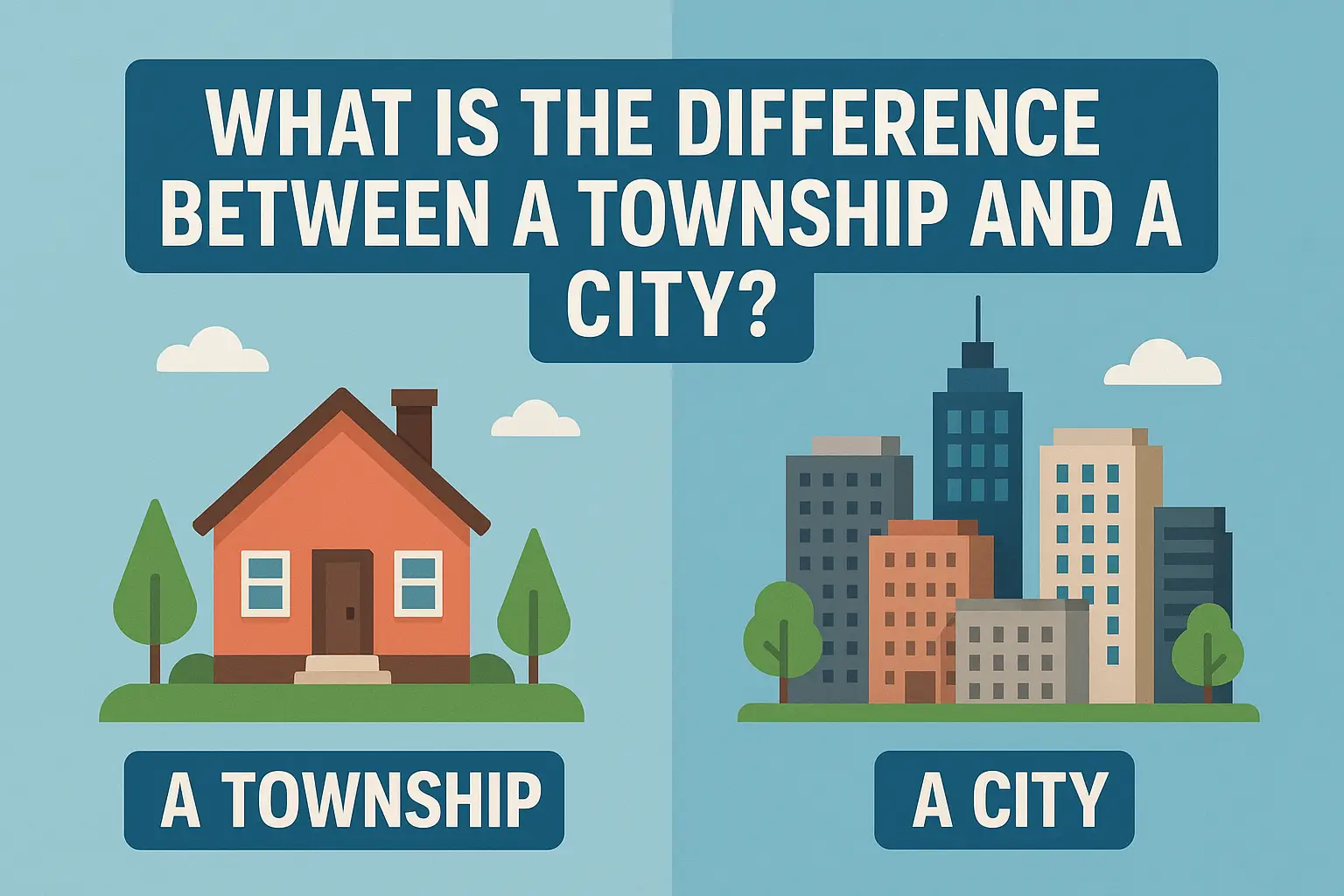Have you ever wondered what sets a township apart from a city? These terms often appear in conversations about living spaces, local government, and community life, but their meanings can be surprisingly complex.
Understanding the difference can help you make informed decisions about where you live or invest. Imagine knowing exactly what to expect when you move to a new area or purchase property. This knowledge can empower you, ensuring your choices align with your lifestyle and future plans.
So, let’s dive into the fascinating distinctions between townships and cities—this clarity could change how you view your surroundings!
Defining Townships
Townships and cities differ mainly in governance and size. Townships often cover larger rural areas with less population density. Cities, on the other hand, tend to be more urbanized with structured governments and higher population density. Understanding these differences helps in recognizing their distinct roles in regional planning.
When you hear the word “township,” you might envision a quaint community, perhaps reminiscent of your childhood summer visits to relatives or friends in smaller areas. But what really defines a township? Understanding townships begins by exploring their unique characteristics that set them apart from cities.
Origin And History
Townships have a rich history that dates back to colonial America. They were established as subdivisions of counties, serving as the smallest unit of local government. Unlike cities, which often developed around commerce and trade, townships were primarily agricultural, providing a framework for rural governance.
Imagine walking through a township that still holds historical roots, where each street whispers stories of early settlers. Knowing this history can give you a sense of why townships carry a different vibe than bustling cities.
Size And Population
Townships typically cover larger geographical areas than cities but have a smaller population density. While cities are known for their skyscrapers and crowded streets, townships offer more open spaces and fewer people.
If you value a quieter lifestyle with room to breathe, a township might be appealing. Think of it as a place where you can have a backyard big enough for a family picnic, unlike the compact spaces in city apartments.
Administrative Structure
Townships operate under a different administrative setup compared to cities. They are governed by a board of trustees or similar entities, focusing on local issues like road maintenance and zoning laws.
This structure often means more direct involvement in community decisions. Have you ever attended a township meeting? You might find yourself surprised at how much influence your voice can have compared to city council sessions.
Consider how this involvement can impact your daily life. Would you prefer having a say in local matters, or do you favor letting city officials handle them?
Understanding these aspects gives you a clearer picture of what life in a township might entail. Whether you’re considering a move or simply curious, knowing these differences helps you appreciate the uniqueness of townships.
:max_bytes(150000):strip_icc()/difference-between-a-city-and-a-town-4069700-FINAL-3319050e58ca4449a1426ad274c0467b.jpg)
Characteristics Of Cities
Cities are vibrant hubs of activity. They often boast unique characteristics that distinguish them from townships. These traits contribute to their appeal and functionality. Understanding these features helps grasp the essence of urban life.
Urban Development
Cities show rapid urban development. Skyscrapers, shopping malls, and cultural centers are common sights. Infrastructure is well-planned to support growing populations. Highways, bridges, and public transport systems connect different parts. This development attracts businesses and tourists alike.
Population Density
Population density in cities is high. Many people live and work in close proximity. Apartments and condos are more prevalent than houses. This density fosters diverse communities. It offers rich cultural experiences and networking opportunities. Public spaces are essential for relaxation and socializing.
Governance Model
Cities operate under structured governance models. Local governments consist of mayors and councils. They manage resources and services. Policymaking is crucial to address urban challenges. This governance ensures efficient functioning and supports community welfare.
Legal Distinctions
A township is typically smaller than a city and often focused on rural community needs. Cities tend to have more complex governance structures, providing more services and amenities to a larger population. Understanding these differences helps in recognizing the varied administrative roles each plays within local government.
Understanding the legal distinctions between a township and a city can be crucial for anyone looking to buy property, start a business, or simply understand their local governance. These distinctions affect everything from how services are provided to what types of businesses can operate within each jurisdiction. By knowing these differences, you can make more informed decisions and better understand your community’s structure. Let’s delve into the specific legal aspects that differentiate townships from cities.
Jurisdictional Powers
Townships typically have limited jurisdictional powers compared to cities. This means they often rely on county governments for services like law enforcement and road maintenance. Cities, on the other hand, usually have more autonomy and can manage their own police departments, fire services, and public works.
Have you ever noticed how city services seem more comprehensive? That’s because cities have the authority to impose taxes and allocate resources directly. This allows them to offer a wider range of services without outside intervention.
Zoning And Land Use
Zoning laws can be a game-changer for residents and businesses. In townships, zoning regulations are often less strict, giving property owners more flexibility. This might seem beneficial at first, but it can lead to less organized development.
Cities usually have more detailed zoning plans. These plans create designated areas for residential, commercial, and industrial activities. This organization can boost property values and create a more cohesive community environment.
Regulatory Authority
The level of regulatory authority between townships and cities can impact everything from building permits to business licenses. Townships often have fewer regulations, which might appeal to those wanting less government oversight. However, this can sometimes result in fewer protections or standards.
Cities generally have more comprehensive regulations to ensure public safety and welfare. This means if you’re opening a business or constructing a new building, you’ll likely face more red tape but also gain a framework that supports community growth.
Understanding these legal distinctions can empower you to navigate your local government’s services and regulations more effectively. Whether you prefer the structured environment of a city or the laid-back governance of a township, being informed helps you make choices that align with your lifestyle and values. What kind of environment suits you best?
Economic Factors
Townships and cities differ mainly in governance and economic activities. Townships often have fewer services and rely on nearby cities for resources. Cities usually offer more jobs, schools, and services, attracting businesses and residents.
Understanding the economic factors that distinguish a township from a city can shed light on the unique dynamics of each. Both townships and cities play vital roles in the economy, but they do so in distinct ways. By examining their funding, revenue sources, economic activities, and business environments, you can better appreciate these differences and their impact on daily life.
Funding And Revenue Sources
The way a township generates revenue often contrasts sharply with that of a city. Townships typically rely on property taxes and state aid, which can limit their budget for development projects. Cities, on the other hand, have access to a broader range of revenue streams such as sales taxes, utility fees, and business licenses.
Consider how this affects public services. In a township, you might notice fewer amenities or less frequent maintenance compared to a city. This is because cities often have larger budgets, allowing for more comprehensive services. How does your locality handle its funding? This knowledge might reveal why certain public services are available—or not.
Economic Activities
Economic activities in townships are often centered around agriculture, small businesses, and local trades. This creates a close-knit community where local produce and crafts are valued. Cities, however, thrive on diverse economic activities, including manufacturing, technology, and services.
Think about your last visit to a farmer’s market in a township. The products are often locally sourced, fostering a sense of community support. In contrast, a city’s economic landscape is more varied, offering a range of job opportunities across different sectors. Which environment aligns more with your lifestyle and career goals?
Business Environment
The business environment in a township tends to be less competitive but also less diverse. Local businesses, often family-owned, rely heavily on loyal, repeat customers. In cities, the business environment is bustling and competitive, with a wide array of enterprises from startups to multinational corporations.
Imagine starting a business. In a township, you might face less competition and have a more personal relationship with your customers. However, cities offer a larger customer base and more networking opportunities. What type of business environment do you thrive in?
Understanding these economic factors can help you make informed decisions about where to live or start a business. Whether you prefer the intimacy of a township or the vibrancy of a city, each has its unique advantages and challenges.
Community And Culture
Understanding the difference between a township and a city extends beyond mere size. Community and culture play significant roles in shaping these regions. Townships and cities each offer unique experiences, influenced by their social infrastructure, cultural life, and diversity.
Social Infrastructure
Social infrastructure in townships often revolves around smaller community centers. These places serve as gathering spots. Townships might have fewer schools and hospitals, but they focus on local needs. Cities boast extensive social infrastructure. Large hospitals, universities, and recreation centers are common. Cities cater to a larger population, providing varied services.
Cultural Life
Townships have a distinct cultural life. Traditional events and local festivals are popular. They reflect the close-knit nature of the community. Cities offer a vibrant cultural scene. Museums, theaters, and galleries abound. People enjoy diverse activities and events. City life encourages cultural exchange and growth.
Diversity And Demographics
Townships often have less diversity. Residents share similar backgrounds and traditions. This creates a strong sense of belonging. Cities are melting pots of cultures. They attract people from different walks of life. This diversity enriches the city’s social fabric. It provides a wider range of experiences and perspectives.
Services And Amenities
Townships often offer fewer services and amenities compared to cities. Cities usually provide advanced healthcare, public transportation, and entertainment options. Townships might focus on basic services like local schools and small parks.
When deciding where to live or invest, understanding the difference in services and amenities between a township and a city can make a huge difference. While both offer essential services, the scale and variety often vary. This can impact your lifestyle, access to resources, and even your daily convenience. So, what makes a township different from a city in terms of what they offer? Let’s break it down with specific examples.
Public Services
In cities, public services are typically more extensive and diverse. You might find a wider array of libraries, public parks, and recreational centers. Cities often have more comprehensive waste management systems and public safety services, such as larger police and fire departments.
Townships, however, may offer fewer public services due to their smaller size and budget constraints. If you’re in a township, you might have a local community center instead of a large recreational complex. But what they might lack in quantity, they often make up for in a tight-knit community feel where everybody knows your name.
Transportation Systems
Public transportation is usually more developed in cities, offering buses, subways, and possibly even trams. This can make commuting easier and more efficient. City dwellers often enjoy the luxury of not needing a car for daily errands.
In contrast, townships might rely more on personal vehicles due to limited public transport options. You might find yourself driving more often to get to work or school. However, some people prefer this for the tranquility and lower traffic congestion that often comes with township living.
Healthcare And Education
Cities usually boast a variety of healthcare facilities, from hospitals to specialized clinics. They often have numerous schools and higher educational institutions, providing a range of options for families and students.
In a township, healthcare facilities might be fewer and farther between. You might have to travel to the nearest city for specialized medical care. Educational options might also be limited, but smaller schools can offer more personalized attention, which some parents find beneficial.
So, do you prioritize a comprehensive range of services, or do you value a close-knit community feel with potentially fewer amenities? Your choice between a township and a city may hinge on this. What suits your lifestyle better?
Examples And Case Studies
Townships often have smaller populations and limited services compared to cities. Cities usually offer more amenities and infrastructure. Case studies reveal how governance and community needs differ between these entities.
Understanding the difference between a township and a city can be intriguing. They may seem similar but serve distinct roles in governance and community structure. By examining examples and case studies, you can grasp how these entities operate differently. Let’s explore some notable townships and prominent cities to shed light on their unique features.
Notable Townships
Some townships have thrived by focusing on community needs. Take Bloomfield Township in Michigan. It boasts a well-organized local government that prioritizes public safety and education. Its system allows residents to have a closer relationship with their leaders.
Another example is Lower Merion Township in Pennsylvania. Here, the emphasis is on preserving historical sites while promoting modern amenities. Such townships provide a sense of belonging and pride among residents.
Prominent Cities
Cities often serve as economic hubs with vibrant cultures. New York City is a prime example. It’s known for its iconic skyline and bustling streets. The city offers endless opportunities for employment and entertainment, drawing people from across the globe.
Meanwhile, San Francisco stands out for its tech innovation. The city is a magnet for startups and entrepreneurs. Its diverse neighborhoods reflect a rich tapestry of cultures and ideas.
Comparative Analysis
How do townships and cities differ? Townships typically focus on local services and governance. They foster tight-knit communities where residents engage directly with local issues.
Cities prioritize economic growth and infrastructure development. They attract diverse populations, creating multicultural environments.
Consider your own community. Does it function more like a township or a city? How does that affect your daily life?
Reflecting on these examples and case studies can help you appreciate the nuances between townships and cities. Each has its advantages and challenges, shaping the way residents interact and thrive.

Implications For Residents
Living in a township often means fewer services and lower taxes compared to a city. Residents in cities usually enjoy more amenities, including public transportation and recreation centers. Understanding these differences helps residents make informed decisions about where to live.
Understanding the implications of living in a township versus a city can deeply affect your lifestyle, community involvement, and financial choices. Whether you’re contemplating a move or simply curious, recognizing these differences can help make informed decisions. Let’s delve into the aspects of quality of life, civic engagement, and housing costs that residents experience in these distinct environments.
Quality Of Life
Living in a township often brings the charm of a close-knit community. You might enjoy quieter streets and a slower pace of life. This is perfect if you cherish peaceful surroundings and personal space.
Cities, on the other hand, buzz with activity and opportunities. They offer diverse cultural experiences, entertainment, and amenities. But the hustle can sometimes compromise tranquility.
Consider what matters most to you. Is it the serene beauty of nature or the vibrant pulse of urban life? Your preference will shape your quality of life.
Civic Engagement
In townships, civic engagement often means active participation in local events and governance. Smaller populations allow you to have a tangible impact on community decisions. You might find yourself voting on local matters or attending town meetings.
City residents have broader platforms for involvement. With larger populations, your voice is part of a bigger chorus. Opportunities to engage in city-wide initiatives or volunteer in diverse programs are abundant.
Think about how involved you want to be. Do you prefer a direct hand in shaping your community or being part of a larger movement?
Housing And Living Costs
Township living usually comes with lower housing costs. You might find spacious homes and green lawns at prices that won’t break the bank. This can be a boon if you’re looking for affordability and space.
Cities often demand higher living expenses. Rent and property prices can soar, especially in popular neighborhoods. Yet, the convenience of being close to workplaces and amenities can offset these costs.
Evaluate your financial priorities. Are you willing to invest more for the conveniences of city life, or do you prefer the budget-friendly aspect of township living?
As you weigh these factors, consider what aligns with your lifestyle and goals. Each choice has its unique benefits and challenges. What kind of community do you envision yourself thriving in?

Frequently Asked Questions
What Defines A Township?
A township is a type of municipal division. It often has a smaller population than a city. Townships may offer fewer services and have less complex governance structures. They typically focus on local community needs, like roads and public spaces.
They are often found in rural or suburban areas.
How Does A City Differ From A Township?
A city is generally larger and more densely populated than a township. It usually provides a wider range of services. Cities have more complex administrative and governmental structures. They focus on diverse needs, including education, public transportation, and economic development.
Cities often serve as cultural and commercial hubs.
Are Townships Always Rural Areas?
Not all townships are rural. While many are located in rural regions, some are in suburban areas. The classification of a township does not solely depend on its rural or urban status. It depends more on population size, governance structure, and services offered.
Each township may have unique characteristics.
Do Cities Have More Services Than Townships?
Yes, cities typically offer more services than townships. Cities often provide advanced services like public transportation, healthcare, and education. They also have larger police and fire departments. Townships might offer fewer services, focusing on basic needs like road maintenance. The range of services depends on population size and administrative capability.
Conclusion
Understanding townships and cities is important. They differ in size and governance. Townships are smaller and often rural. Cities are larger, with more services and infrastructure. Each has its own charm and benefits. Choosing where to live depends on personal preference.
Some enjoy the quiet of a township. Others prefer the bustling life of a city. Consider lifestyle and needs when deciding. Both offer unique experiences and opportunities. Explore both to find your best fit.

I’m someone who’s always been fascinated by how small differences can lead to big understanding. That’s why I love writing “What’s the difference between…” content; it helps me explore topics from multiple angles and explain them in a clear, practical way. Whether it’s tech, productivity, business, or everyday decisions, I enjoy making complex ideas easier to compare, understand, and act on.










